Division of Medical Biology
ENG |
PL
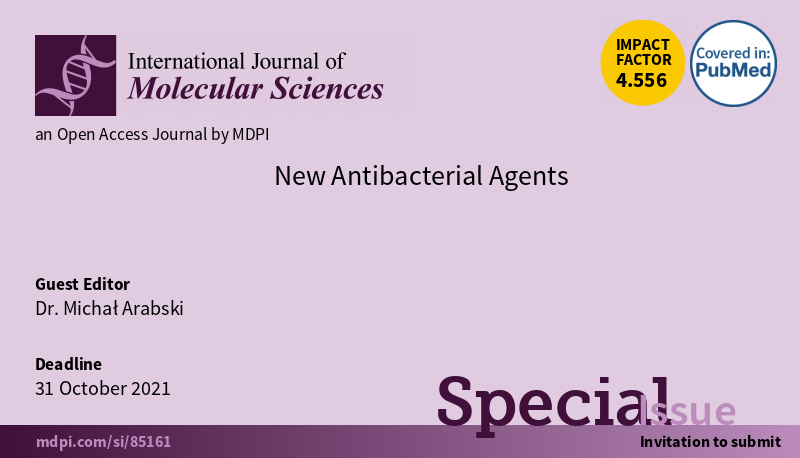
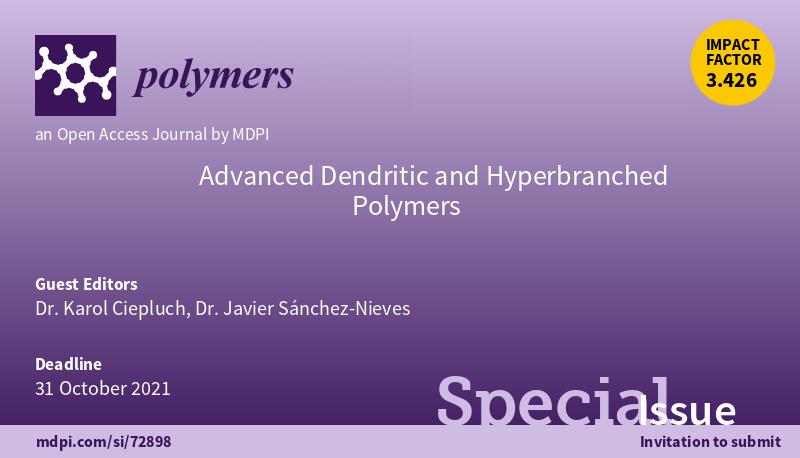 Research groups
Research groups
RADIOBIOLOGY RESEARCH GROUP Team Prof. Lankoff Anna Ph.D. Prof. Wójcik Andrzej Ph.D. Lisowska Halina Ph.D., Assoc. Prof. Węgierek-Ciuk Aneta Ph.D. Krakowiak Wiktoria M.Sc. Płódowska Magdalena M.Sc. Research topics
The use of ionising radiation for the diagnosis and treatment of lymphoma and brain tumours has significantly improved healthcare and patient outcomes. Ionising radiation is now relied on heavily for patient diagnosis and treatment. We investigate the effects of radiation exposure on patients, workers and carers as well as the public and the environment during patient management. It will organise high-level multidisciplinary training in the field of radiation dosimetry, risk appraisal and radiation protection. More specifically, we develop new dosimetry and risk appraisal methods and tools. Artificial intelligence (AI) will be used to determine the radiation burden on patients, and new techniques will be designed to manage data from radiation therapy sessions.
ProjectsHORIZON 2020 SINFONIA 945196 Radiation risk appraisal for detrimental effects from medical exposure during management of patients with lymphoma or brain tumour. NCBiR Pol-Nor/201040/72/2013 Green fuels and human health - toxicity of engine emissions from 1st and 2nd generation biodiesel fuels. Publications – TOP10 Svetličič Maja, Bomhard Anton, Sterr Christoph, Brückner Fabian, Płódowska Magdalena, Lisowska Halina, Lundholm Lovisa. Alpha Radiation as a Way to Target Heterochromatic and Gamma Radiation-Exposed Breast Cancer Cells. Cells 2020 Vol. 9 Iss. 5, 1-17. Olofsson Dante, Cheng Lei, Barrios Fernández Rubén, Płódowska Magdalena, López Riego Milagrosa, Akuwudike Pamela, Lisowska Halina, Lundholm Lovisa, Wójcik Andrzej. Biological effectiveness of very high gamma dose rate and its implication for radiological protection. Radiation and Environmental Biophysics 2020 Vol. 59 no. 3, 451-460. Czerwińska Malwina, Fracasso Giulio, Pruszyński Marek, Bilewicz Aleksander, Kruszewski Marcin, Majkowska-Pilip Agnieszka, Lankoff Anna. Design and evaluation of 223Ra-labeled and anti-PSMA targeted NaA nanozeolites for prostate cancer therapy - Part I. Materials 2020 Vol. 13 Iss. 17, 1-23. Czerwińska Malwina, Bilewicz Aleksander, Kruszewski Marcin, Węgierek-Ciuk Aneta, Lankoff Anna. Targeted radionuclide therapy of prostate cancer - from basic research to clinical perspectives. Molecules 2020 Vol. 25 Iss. 7, 1-32. Czub Joanna, Banaś Dariusz, Braziewicz Janusz, Buraczewska Iwona, Jaskóła Marian, Kaźmierczak Urszula, Korman Andrzej, Lankoff Anna, Lisowska Halina, Szefliński Zygmunt, Wojewódzka Maria, Wójcik Andrzej. Biological effects of mixed-ion beams. Part 2. The relative biological effectiveness of CHO-K1 cells irradiated by mixed- and single-ion beams. Applied Radiation and Isotopes 2019 Vol. 150, 192-198. Cheng Lei, Brzozowska-Wardecka Beata, Lisowska Halina, Wójcik Andrzej, Lundholm Lovisa. Impact of ATM and DNA-PK Inhibition on gene expression and individual response of human lymphocytes to mixed beams of alpha particles and X-rays. Cancers 2019 Vol. 11 Iss. 12, 1-16. Wojewodzka M, Sommer S, Kruszewski M, Sikorska K, Lewicki M, Lisowska H, Wegierek-Ciuk A, Kowalska M, Lankoff. Defining Blood Processing Parameters for Optimal Detection of γ-H2AX Foci: A Small Blood Volume Method. A.Radiat Res. 2015 Jul;184(1:95-104. Eriksson Mina, HÅÅg Petra, Brzozowska Beata, Lipka Magdalena, Lisowska Halina, Lewensohn Rolf, Wójcik Andrzej, Viktorsson Kristina, Lundholm Lovisa. Analysis of chromatin opening in heterochromatic non-small cell lung cancer tumor-initiating cells in relation to DNA-damaging antitumor treatment. International Journal of Radiation Oncology, Biology, Physics 2018 Vol. 100 Iss. 1, 174-187. Czub Joanna, Banaś Dariusz, Braziewicz Janusz, Buraczewska Iwona, Jaskóła Marian, Kaźmierczak Urszula, Korman Andrzej, Lankoff Anna, Lisowska Halina, Szefliński Zygmunt, Wojewódzka Maria, Wójcik Andrzej. Biological effects of mixed-ion beams. Part 1. Effect of irradiation of the CHO-K1 cells with a mixed-ion beam containing the carbon and oxygen ions. Applied Radiation and Isotopes 2018 Vol. 139, 304-309. Cheng L, Lisowska H, Sollazzo A, Wegierek-Ciuk A, Stepień K, Kuszewski T, Lankoff A, Haghdoost S, Wojcik A. Modulation of radiation-induced cytogenetic damage in human peripheral blood lymphocytes by hypothermia. Mutat Res Genet Toxicol Environ Mutagen. 2015 Nov;793:96-100. Collaboration Institute of Nuclear Chemistry and Technology, Poland Stockholms Universitet, Sweden Methods RT-qPCR, Western blot, ELISA, confocal microscopy, comet assay, flow cytometry, micronucleus test, chromosome aberration assay, gamma-H2AX assay, immunofluorescence methods, in vitro cultivation methods of eukaryotic cells NANO-BIOPHYSICS RESEARCH GROUP Team Ciepluch Karol Ph.D. Skrzyniarz Kinga M.Sc. Research topics
Our group is a multidisciplinary research team operating at the interfaces of biophysics, nanobiology and nanomedicine. In our research, we focus on studying the mechanism of permeability of the outer bacterial membrane by antibacterial dendritic nanoparticles eg. dendrimers. Dendrimers, by virtue of the unique ramified nanostructure and multivalent cooperativity, are emerging as promising nanomaterials thanks to their antibacterial activity and their ability to deliver antibacterial like phage-endolysin. As antibacterial resistance has become a global threat, there is a pressing
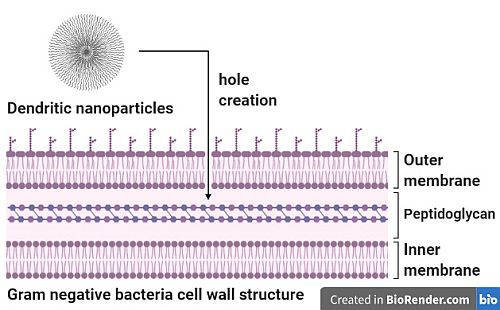 need for new antibacterial agents to treat bacterial infection and overcome drug resistance. Drug resistance is mainly due to the presence of an additional outer membrane (OM) in Gram-negative bacteria. Therefore, we study the antibacterial properties of cationic dendrimers with antibacterial activity closely related to membrane permeabilization or membrane disruption. Moreover, we are focusing on study the synergic effect of antibacterial dendritic nanoparticles together with phage-endolysin as a new tool to kill antibiotic resistance bacteria. Another area of our research is the study of the nanotoxicity of dendritic nanoparticles and the study of the effect of dendronization of selected proteins. Projects Scholarship Program for them. Mieczysław Bekker no. PPN/BEK/2020/1/00152 - Karol Ciepluch Ph.D. National Centre for Science MINIATURA 4 No. DEC-2020/04/X/ST4/00015 Dendronization of alpha-glucosidase. National Centre for Science OPUS No. UMO-2017/27/B/NZ6/00199 Gasdermin as a potential permeabilizing agent of outer cell membrane of Pseudomonas aeruginosa in order to enhanced bactericidal effect of recombinant phage endolysins. COST Action CA17140. Nano2Clinic, Cancer Nanomedicine - from the bench to the bedside. Ministry of Science and Higher Education "Incubator of Innovaion+" Project No. 3/NAB4/II+/2018 Development of technology for the purification of biotechnological products from bacterial endotoxins using a copolymer immobilized with dendrimers. Ministry of Science and Higher Education No. 1102/MOB/2013/02014-2015 Dendrimer - based drug delivery. Publications – TOP10 Ciepluch K., Skrzyniarz K., Zdańska J., Barrios-Gumiel A., Sánchez-Nieves J., de la Mata J., Maciejewska B., Drulis-Kawa Z., Bryszewska M., Arabski M. PEGylation of dendronized silver nanoparticles increases the binding affinity of antimicrobial proteins. Journal of Molecular Liquids 2020, 319, 114339. Ciepluch K., Biehl R., Bryszewska M., Arabski M. Poly(propylene imine) dendrimers can bind to PEGylated albumin at PEG and albumin surface: biophysical examination of a PEGylated platform to transport cationic dendritic nanoparticles. Biopolymers 2020 e23386. Barrios-Gumiel A., Sánchez-Nieves J., Pedziwiatr-Werbicka E., Abashkin V., Shcharbina N., Shcharbin D., Glińska S., Ciepluch K., Kuc-Ciepluch D., Lach D., Bryszewska M., Gómez R., de la Mata F.J. Effect of PEGylation on the biological properties of cationic carbosilane dendronized gold nanoparticles. International Journal of Pharmaceutics 2020, 573:118867. Ciepluch K., Skrzyniarz K., Barrios-Gumiel A., Quintana S., Sánchez-Nieves J., de la Mata F.J., Maciejewska B., Drulis-Kawa Z, Arabski M. Dendronized silver nanoparticles as bacterial membrane permeabilizers and their interactions with P. aeruginosa lipopolysaccharides, lysozymes, and phage-derived endolysins’. Front Microbiol 2019, 10:2771. Ciepluch K., Maciejewska B., Gałczyńska K., Kuc-Ciepluch D., Bryszewska M., Appelhans D., Drulis-Kawa Z., Arabski M. The influence of cationic dendrimers on antibacterial activity of phage endolysin against P. aeruginosa cells. Bioorg Chem. 2019 Oct;91:103121. Gałczyńska K., Ciepluch K., Madej Ł., Kurdziel K., Maciejewska B., Drulis-Kawa Z., Węgierek-Ciuk A., Lankoff A., Arabski M. Selective cytotoxicity and antifungal properties of copper(II) and cobalt(II) complexes with imidazole-4-acetate anion or 1-allylimidazole. Sci Rep. 2019 Jul 5;9(1):9777. Ciepluch K., Radulescu A., Hoffmann I., Raba A., Allgaier J., Richter D., Biehl R, Influence of PEGylation on domain dynamics of phosphoglycerate kinase: PEG acts like entropic spring for the protein. Bioconjugate Chemistry 2018, 29, 6, 1950-1960. Gałczyńska K., Kurdziel K., Ciepluch K. Rachuna J., Kowalska M., Madej L., Węgierek-Ciuk A., Lankoff A., Arabski M. Synthesis, physicochemical and biological characterization of Ni(II) complex with imidazole-4-acetate anion as new antifungal agent. Journal of Chemical Science 2018, 130, 12. Collaboration University of Alcala, Spain Forschungszentrum Jülich, Germany University of Lodz, Poland University of Wroclaw, Poland Methods fluorescence spectroscopy, circular dichroism, UV-VIS, RT-qPCR, Western blot, DNA microarray, transmission electron microscopy PHAGES RESEARCH GROUP Team Arabski Michał Ph.D., Assoc. Prof. Ciepluch Karol Ph.D. Kuc-Ciepluch Dorota M.Sc. Rachuna Jarosław M.Sc. Sikora Monika M.Sc. Research topics
Our team is focused to evaluate the permeabilization of the bacterial outer membrane (OM) during physiological pyroptosis process to promote bactericidal activity of recombinant phage endolysins against Pseudomonas aeruginosa. Pyroptosis is a natural immune response of eukaryotic cells to bacterial infection, leading to the secretion of the gasdermin D protein (GSDMD), which forms pores in biological membranes. Permeabilization of Gram-negatives (OM) would allow the delivery of phage muralytic enzymes (endolysins) to the target (peptidoglycan) located in the periplasmic space.
Projects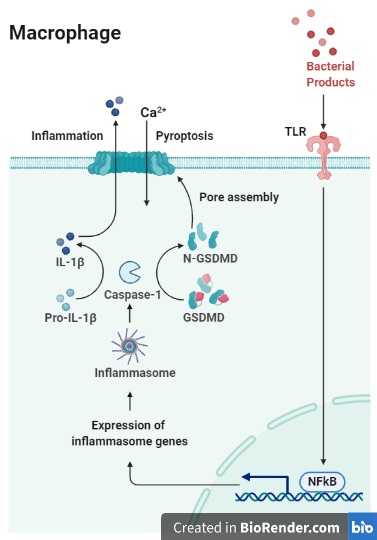 Degradation of peptidoglycan by endolysin leads to bacterial cell lysis in seconds. Unfortunately, endolysins applied externally do not exhibit an efficient lytic activity against Gram-negative bacteria due to the OM barrier. The idea of presented project is to combine two natural antibacterials (gasdermin and endolysin). The scientific objective of our team work is to evaluate whether the natural immune response of human eukaryotic cells to bacterial infection, i.e. pyroptosis, can lead to effective eradication of bacteria when combined with exogenously applied phage endolysins. The next topic of our work is innovative application of laser interferometry method in analysis of quantitative eradication of biofilm forming by model and clinical Pseudomonas aeruginosa strains by bacteriophages, metals complexes, biopolymers with antibacterial agents and nanoparticles. Our study are focused on an investigation of new biocomposites containing polysaccharides (hydrogels), nanocopper/copper ions, furanone, and viral particles to evaluate their biocompatibility, antibacterial and antibiofilm properties. We optilmalized the laser interferometry system to analysis of new drugs diffucion through eukariotic cell monolayer. The laser interferometry system was constructed in our lab in cooperation with physicans from JKU. National Centre for Science OPUS No. UMO-2017/27/B/NZ6/00199 Gasdermin as a potential permeabilizing agent of outer cell membrane of Pseudomonas aeruginosa in order to enhanced bactericidal effect of recombinant phage endolysins. Ministry of Science and Higher Education "Incubator of Innovaion+" Project No. 3/NAB4/II+/2018 Development of technology for the purification of biotechnological products from bacterial endotoxins using a copolymer immobilized with dendrimers. National Centre for Science (NCN) Project No. 2016/21/B/NZ6/01157 Elaboration and characteristics of biocomposites with anti-virulent and anti-bacterial properties against Pseudomonas aeruginosa. National Centre for Science (NCN) Project No. 2015/18/M/NZ6/00413 Surface carbohydrate-dependent phages select for resistant bacterial population that become more susceptible to host defense. National Centre for Science (NCN) Project No. 2012/04/M/NZ6/00335 Obtention of recombinant exopolysaccharide (EPS) depolymerase coded by Pseudomonas aeruginosa phages and determination of its activity in biofilm degradation. COST project, Action CA18113 Understanding and exploiting the impacts of low pH on micro-organisms. COST project, Action BM1003 Microbial cell surface determinants of virulence as targets for new therapeutics in cystic fibrosis. Publications – TOP10 Ciepluch K, Skrzyniarz K, Zdanska J, Barrios-Gumiel A, Sanchez-Nieves J, de la Mata J, Maciejewska B, Drulis-Kawa Z, Bryszewska M, Arabski M. PEGylation of dendronized silver nanoparticles increases the binding affinity of antimicrobial proteins. Journal of Molecular Liquids 319 (2020) 114339. Kosztołowicz T, Metzler R, Wąsik S, Arabski M. Modelling experimentally measured of ciprofloxacin antibiotic diffusion in Pseudomonas aeruginosa biofilm formed in artificial sputum medium. PLoS One 2020 Dec 3;15(12):e0243003. Olszak T, Danis-Włodarczyk K, Arabski M, Guła G, Maciejewska B, Wąsik S, Lood C, Higgins G, Harvey BJ, Lavigne R, Drulis-Kawa Z. Pseudomonas aeruginosa PA5oct jumbo phage impacts planktonic and biofilm population and reduces its host virulence. Viruses 2019, 11, 1089. Ciepluch K, Skrzyniarz K, Barrios-Gumiel A, Quintana S, Sanchez-Nieves J, De la Mata FJ, Maciejewska B, Drulis-Kawa Z, Arabski M. Dendronized silver nanoparticles as bacterial membrane permeabilizers and their interactions with P. aeruginosa lipopolysaccharides, lysozymes, and phage-derived endolysins. Front. Microbiol. 2019, 10:2771. Ciepluch K, Maciejewska B, Gałczyńska K, Kuc-Ciepluch D, Bryszewska M, Appelhans D, Drulis-Kawa Z, Arabski M. The influence of cationic dendrimers on antibacterial activity of phage endolysin against P. aeruginosa cells. Bioorganic Chemistry, 2019, 91:103121. Gałczyńska K, Ciepluch K, Madej L, Kurdziel K, Maciejewska B, Drulis-Kawa Z, Węgierek-Ciuk A, Lankoff A, Arabski M. Selective cytotoxicity and antifungal properties of copper(II) and cobalt(II) complexes with imidazole-4-acetate anion or 1-allylimidazole. Sci Rep. 2019, 9:9777. Olszak T, Shneider MM, Latka A, Maciejewska B, Browning C, Sycheva LV, Cornelissen A, Danis-Włodarczyk K, Senchenkova SN, Shashkov AS, Guła G, Arabski M, Wąsik S, Miroshnikov KA, Lavigne R, Leiman PG, Knirel YA, Drulis-Kawa Z. The O-specific polysaccharide lyase from the phage LKA1 tailspike reduces Pseudomonas virulence. Sci Rep. 2017, 24;7(1):16302. Danis-Włodarczyk K, Vandenheuvel D, Jang HB, Briers Y, Olszak T, Arabski M, Wąsik S, Drabik M, Higgins G, Tyrrell J, Harvey BJ, Noben JP, Lavigne R, Drulis-Kawa Z. A proposed integrated approach for the preclinical evaluation of phage therapy in Pseudomonas infections. Sci. Rep. 2016, 6, 28115. Danis-Włodarczyk K, Olszak T, Arabski M, Wąsik S, Majkowska-Skrobek G, Augustyniak D, Gula G, Briers Y, Jang HB, Vandenheuvel D, Duda KA, Lavigne R, Drulis-Kawa Z. Characterization of the newly isolated lytic bacteriophages KTN6 and KT28 and their efficacy against Pseudomonas aeruginosa biofilm. PLoS One 2015, 21;10(5):e0127603. Lankoff A, Arabski M, Wegierek-Ciuk A, Kruszewski M, Lisowska H, Banasik-Nowak A, Rózga-Wijas K, Wojewódzka M, Słomkowski S. Effect of surface modification of silica nanoparticles on toxicity and cellular uptake by human peripheral blood lymphocytes in vitro. Nanotoxicology 2013, 7, 235-50. Collaboration University of Alcala, Spain KU Leuven, Belgium University of Wroclaw, Poland University of Lodz, Poland Łukasiewicz Research Network-Institute of Biopolymers and Chemical Fibres, Poland Methods UV-VIS, RT-qPCR, Western blot, ELISA, DNA microarray, confocal microscopy, microbiological cultivation techniques, laser interferometry ONCOGENETICS RESEARCH GROUP Team Artur Kowalik, Ph.D., Assoc. Prof. Arabski Michał Ph.D., Assoc. Prof. Gałczyńska Katarzyna Ph.D. Kowalska Magdalena Ph.D. Węgierek-Ciuk Aneta Ph.D. Stawiarz Magdalena M.Sc. Research topics
Acute Myeloid Leukemia (AML) is the most commonly diagnosed aggressive leukemia. It originates from a single dominant mutation, and then transfers into a complex disease during which abnormally proliferating cells acquire collaborative mutations with different clinical/biological importance. Quick and exact profiling of patients mutational profile is important for the introduction of precise and personalized therapies. The spectrum of possible mutations that are observed in AML results in fact that the significance of many of them remain unclear. We focus on investigation the molecular mechanisms (mutations, translocations and genes expression) driving AML development using Next Generation Sequencing (NGS) that allows testing genetic diversity in multiple genes parallelly with significantly high sensitivity of detections. Testing the relationship between patients mutational profiles and course of diseases/therapies outcomes will help in classification of mutations as prognostic factors and searching of new therapeutic targets. In addition use of NGS will allow also to investigate the occurrence of minimal residual disease (MRD) after treatment, that is important for risk stratification and treatment planning.
Projects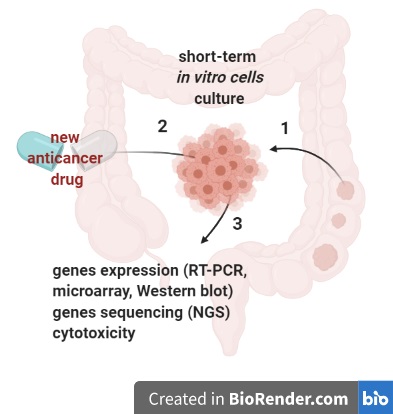 Colorectal cancer is one of the most commonly diagnosed malignant neoplasms in men and women. Despite the availability of colonoscopy, most cases are diagnosed at an advanced stage, when metastases to other organs are already present. Unfortunately, recent studies indicate that 80% of colorectal cancer cases metastasize in very early stage of disease. The aim of the research is to find out about the molecular biology of colon cancer and the interaction of cancer cells with cells of the immune system and the microbiome. Understanding these complex interactions will help identify new therapy targets and strategies for early detection of colorectal cancer. The next topic of our work is in vitro analysis of the anticancer properties of transition metal complexes and nanoparticles. In our study we focus on cyto- and genotoxic activities of new antitumor agents on DNA and protein level as well as mechanism of their action using normal and cancer cell lines. JKU Interior Grant No. SMGR.RN.20.096 Evaluation of cytotoxic and biophysical properties of chemical compounds with anti-cancer potential. Publications – TOP10 Galczynska K, Drulis-Kawa Z, Arabski M. Antitumor activity of Pt(II), Ru(III) and Cu(II) complexes. Molecules 2020, 25(15), 3492. Lasota J, Chłopek M, Wasąg B, Kowalik A, Christiansen J, Lamoureux J, Kuźniacka A, Felisiak-Gołąbek A, Liu Y, Reyes TAR, Saha R, Agaimy A, Behenska K, Biernat W, Cattaneo L, Centonze G, Daum O, Daumova M, Domagała P, Dziuba I, Geppert CE, Góźdź S, Nasierowska-Guttmejer A, Hałoń A, Hartmann A, Inaguma S, Iżycka-Świeszewska E, Kaczorowski M, Kołos M, Kopczyński J, Michal M, Milione M, Okoń K, Pęksa R, Pyzlak M, Ryś J, Waloszczyk P, Wejman J, Miettinen M. Colorectal adenocarcinomas harboring alk fusion genes: a clinicopathologic and molecular genetic study of 12 cases and review of the literature. Am J Surg Pathol.2020 Sep;44(9):1224-1234. Kowalik A, Jurkowska M, Mierzejewska E, Ługowska I, Gos A, Szumera- Ciećkiewicz A, Zięba S, Koseła-Paterczyk H, van der Oord J, Dębiec-Rychter M, Szamotulska K, Siedlecki J, Rutkowski P. The prognostic role of BRAF and WNT pathways activation in kinase inhibitors-naïve clinical stage III cutaneous melanoma. Melanoma Res. 2020 Aug;30(4):348-357. Kozak K, Kowalik A, Gos A, Wasag B, Lugowska I, Jurkowska M, Krawczynska N, Kosela-Paterczyk H, Switaj T, Teterycz P, Klimczak A, Siedlecki JA, Chlopek M, Kalisz J, Limon J, Rutkowski P. Cell-free DNA BRAFV600E measurements during BRAF inhibitor therapy of metastatic melanoma: long-term analysis. Tumori. 2020 Feb 6:300891619900928. Lasota J, Chłopek M, Lamoureux J, Christiansen J, Kowalik A, Wasąg B, Felisiak-Gołąbek A, Agaimy A, Biernat W, Canzonieri V, Centonze G, Chmielik E, Daum O, Dubová M, Dziuba I, Goertz S, Góźdź S, Guttmejer-Nasierowska A, Haglund C, Hałoń A, Hartmann A, Inaguma S, Iżycka-Świeszewska E, Kaczorowski M, Kita P, Kołos M, Kopczyński J, Michal M, Milione M, Okoń K, Pęksa R, Pyzlak M, Ristimäki A, Ryś J, Szostak B, Szpor J, Szumiło J, Teresiński L, Waloszczyk P, Wejman J, Wesołowski W, Miettinen M. Colonic adenocarcinomas harboring NTRK fusion genes: a clinicopathologic and molecular genetic study of 16 cases and review of the literature. Am J Surg Pathol. 2020 Feb;44(2):162-173. Gąsior-Perczak D, Kowalik A, Walczyk A, Siołek M, Gruszczyński K, Pałyga I, Mikina E, Trybek T, Kopczyński J, Mężyk R, Góźdź S, Kowalska A. Coexisting germline CHEK2 and somatic BRAFV600E mutations in papillary thyroid cancer and their association with clinicopathological features and disease course. Cancers 2019 Vol. 11 Iss. 11, s. 1-18. Lankoff A, Arabski M, Wegierek-Ciuk A, Kruszewski M, Lisowska H, Banasik-Nowak A, Rózga-Wijas K, Wojewódzka M, Słomkowski S. Effect of surface modification of silica nanoparticles on toxicity and cellular uptake by human peripheral blood lymphocytes in vitro. Nanotoxicology 2013, 7, 235-50. Popławski T, Arabski M, Kozirowska D, Morawiec M, Morawiec Z, Morawiec-Bajda A, Klupińska G, Jeziorski A, Chojnacki J, Błasiak J. DNA damage and repair in gastric cancer – a correlation with the hOGG1 and RAD51 genes polymorphisms. Mutat. Res. 2006, 601, 83-91. Arabski M, Kaźmierczak P, Wiśniewska-Jarosińska M, Popławski T, Klupińska G, Chojnacki J, Drzewoski J, Błasiak J. Interaction of amoxicillin with DNA in human lymphocytes and H. pylori-infected and non-infected gastric mucosa cells. Chem. Biol. Interact. 2005, 152, 13-24. Arabski M, Klupińska G, Chojnacki J, Kaźmierczak P, Wiśniewska-Jarosińska M, Drzewoski J, Błasiak J. DNA damage and repair in Helicobacter pylori-infected gastric mucosa cells. Mutat. Res. 2005, 570, 129-135. Collaboration Holly Cross Cancer Center, Poland University of Lodz, Poland Methods Next-Generation Sequencing, RT-qPCR, Western blot, ELISA, DNA microarray, confocal microscopy, comet assay, flow cytometry, micronucleus test, in vitro cultivation methods of eukaryotic cells ANIMAL PHYSIOLOGY RESEARCH GROUP Team Klusek Jolanta Ph.D., Assoc. Prof. Świderska-Kołacz Grażyna Ph.D., Assoc. Prof. Witek Bożena Ph.D., Assoc. Prof. Research topics
Stress reactivity of animals using physiological traits as a model to study genetic variability. Adaptive changes in the activity of lysosomal and glutathione enzymes: peroxidase, transferase, reductase, superoxide dismutase, concentration of glutathione, triacylglycerols and fatty acids in the model of laboratory and farm animals, induced by factors disturbing intracellular homeostasis. Activity of the lysosomal compartment of model species of farm and laboratory animals; enzymatic activity as an adaptive syndrome in animals, degradation of cellular proteins with the participation of lysosomal enzymes. Effect of essential fatty acid and saturated fatty acids on the level of glutathione and the activity of antioxidant enzymes in mouse tissues and cell cultures in interaction with statins.
ProjectsJKU Interior Grant No. 666057 Effect of diatoms as dietary supplements on the parameters of oxidative stress and lipid profile in selected mouse tissues. JKU Interior Grant Changes in the activity of proteolytic enzymes in the lysosomal compartment of mouse liver and kidney cells induced by different concentration and time of action of aluminum. JKU Interior Grant No. SMGR.RN 20.107 The role of algae and lichens rich in EFAs as dietary supplements in the prevention of diseases of free radical etiology. JKU Interior Grant Effect of ascorbic acid on the activity of lysosomal enzymes and selected enzymes in mouse blood plasma generated by the alcohol. Publications – TOP10 Klusek J., Błońska-Sikora E., Witczak B., Orlewska K., Klusek J., Głuszek S., Orlewska E. Glutathione S-transferases gene polymorphism influence on the age of diabetes type 2 onset. BMJ Open Diabetes Research and Care, 2020, 8, 2, 1-7. Klusek J, Nasierowska-Guttmejer A., Kowalik A., Wawrzycka I., Chrapek M., Lewitowicz P., Radowicz-Chil A., Klusek J., Głuszek S. The influence of red meat on colorectal cancer occurrence is dependent on the genetic polymorphisms of S-glutathione transferase genes. Nutrients, 2019, 11, 1-8. Reczyńska D., Witek B., Jarczak J., Czopowicz M., Mickiewicz M., Kaba J. Zwierzchowski L., Bagnicka E. The impact of organic vs. inorganic selenium on dairy goat productivity and expression of selected genes in milk somatic cells. Journal of Dairy Research, 2019, 13, 1-7. Zmorzyński S., Szudy-Szczyrek A., Popek-Marciniec S., Korszen-Pilecka I., Wojcierowska-Litwin M., Luterek M., Chocholska S., Styk W., Świderska-Kołacz G., Januszewska J., Mielnik M., Hus M., Filip A. ACE Insertion/deletion polymorphism (rs4646994) is associated with the increased risk of multiple myeloma. Frontiers in Oncology, 2019, 9, 1-10. Klusek J., Klusek J., Tomasik E., Witczak B., Kołątaj A. Concentration of triacylglycerols and cholesterol in liver, kidneys and muscles of mice following exposure to ethyl alkohol. Annales Universitatis Paedagogicae Cracoviensis. Studia ad Didacticam Biologiae Pertinentia, 2019, 9, 13-21. Stanisławska I, Witek B., Czarny-Działak M., Pałka-Łebek E., Łyp M. Activity of lysosomal enzymes during protein malnutrition and progesterone supplementation in the mouse advances in experimental medicine and biology. Springer Nature Switzerland (book chapter), 2019, 89-95. Witek B., Kamińska A. Neuroprotective role of some microelements in the course of neurodegenerative diseases. Annales Universitatis Paedagogicae Cracoviensis, Studia ad Didacticam Biologiae Pertinentia 2019, 6-12. Witek B., Rochon-Szmejchel D., Stanisławska I, Łyp M., Wróbel K., Zapała A., Kamińska A., Kołątaj A. Activities of lysosomal enzymes in alloxan-induced diabetes in the mouse. Advances in Experimental Medicine and Biology, 2018, 1040, 73-81. Stanisławska I, Witek B, Łyp M, Rochon-Szmejchel D., Wróbel A., Fronczyk W, Kamińska A, Kołątaj A, Załuski D. Effect of glutathione on hydrolytic enzyme activity in the mouse hepatocytes. Clinical Medicine Research, 2018, 3, 81-87. Rochon-Szmejchel D., Witek B., Świderska-Kołacz G., Kołątaj A., Hagner W. Effects of protein intake on glutathione concentration and glutathione enzyme activity in mice. International Educational Scientific Research Journal, 2016, 10, 100-105 Collaboration Institute of Genetics and Animal Breeding of the Polish Academy of Sciences, Jastrzębiec Department of Public Health, Institute of Health Sciences, Pomeranian University, Słupsk Methods Determination of the concentration of triacylglycerols, total lipids and cholesterol. Measurements are made using the spectrocolorimetric method using ready-made tests (Genesys 10S Thermo Scientific). The Alpha Diagnostic tests are used to determine the level of triacylglycerols. The determination is based on the Wako method. The concentration of total lipids and cholesterol is determined using tests by Biochem test [Gliwice, Poland]. Determination of β-GlcUr, β-Gal, β-Glu, Hex, EL, AcP activity (Genesys 10S Thermo Scientific). The principle of the method is based on the breakdown of synthetic p-nitrophenyl-β-D-glucuronide] substrates by β-glucuronidase [β-GlcUr], [4-nitrophenyl-β-D-galactopyranoside] - by β-galactosidase [β -Gal], [4-nitrophenyl-β-D-glucopyranoside] - by β-glucosidase [β-Glu], [4-nitrophenyl-N-acetyl-β-D-glucosaminide] - by N-acetyl-β-glucosaminidase [NAG], [4-nitrophenyl palmitate] - by lysosomal esterase [EL] and [4-nitrophenyl phosphate, disodium salt hexahydrate] - by acid phosphatase [AcP] and free p-nitrophenol release. In an alkaline environment, p-nitrophenol shows a yellow color with an absorption maximum at 420 nm. Determination of AlaAP, LeuAP activity (Genesys 10S Thermo Scientific). The principle of the method is based on the breakdown of synthetic β-naphthylamide substrates [L-leucine-β-naphthylamide hydrochloride] - by leucine aminopeptidase [LeuAP] and [L-alanine-β-naphthylamide] - by alanine aminopeptidase [AlaAPβ] -onphthylamine which, with the coupling reagent [o-Dianisidine Tetrazotized], gives a colored complex with an absorption maximum at 540 nm. Determination of Cath.D and Cath activity (Genesys 10S Thermo Scientific). L in the presence of azocasein. The principle of the method is to break down the synthetic substrate - azo-casein sodium salt] into azopeptides. After incubation, 10% TCA is precipitated with undegraded azocasein. Under these conditions the azopeptides remain in solution giving a color with an absorption maximum at 366 nm. ANATOMY RESEARCH GROUP Team Kuchinka Jacek Ph.D. Assoc. Prof. Nowak Elżbieta Ph.D. Assoc. Prof. Szczurkowski Aleksander Ph.D. Assoc. Prof. Radzimirska Małgorzata Ph.D. Trybus Wojciech Ph.D. Research topics
Comparative anatomy of vertebrates taking into account interspecies diversity. Brain base vascularity. Morphology and neurochemical coding of the autonomic nerve structures in small mammals. Distribution and neurochemical characteristic of the peripheral autonomic nerve structures of the head (ciliary ganglion, pterygopalatine ganglion, otic ganglion and mandibular ganglion) heart, digestive tract, liver, pancreas, (ganglia, fibers, autonomic plexuses).
Projects Jan Kochanowski University Interior Grant SMGR.RN No. 20.203. Publications – TOP10 Kuchinka J., Nowak E., Kuder T., Szczurkowski A. 2015: Morphology and topography of the Celiac Plexus in Degu (Octodon degus). Anatomical Record, 298, 11, 1880-1884. DOI 10.1002/ar.23167. Kuder T., Nowak E. 2015: Autonomic cardiac nerves – literature review. Folia Morphol. 74, 1, 1-8. DOI: 10.5603/FM.2015.0003. Kuchinka J. 2015: Analysis of morphological variation of the internal ophthalmic artery in chinchilla. Veterinarni Medicina, 60, 3: 161-169. DOI: 10.17221/8063-VETMED. Radzimirska M., Bogus-Nowakowska K., Kuder T., Robak A. 2016: Distribution of cocaine and amphetamine-regulated transcript (CART), neuropeptide Y (NPY) and galanin (GAL) in the pterygopalatine ganglion of the domestic duck (Anas platyrhynchos f. domestica). Folia Histochemica et Cytobiologica, 54 (1); 25–31. DOI: 10.5603/FHC.a2016.0002. Kuchinka J. 2017: Morphometry and variability of the brain arterial circle in chinchilla (Chinchilla laniger, Molina). Anatomical Record, 300: 1472-1480. DOI: 10.1002/ar.23566. Kuchinka J. 2017: Internal ophthalmic arteries within the brain base arterial system in guinea pig. Anatomical Record, DOI: 10.1002/ar.23737. Kuchinka J., Chrzanowska M., Kuder T.: 2017 Adrenergic and cholinergic innervation of the atrioventricular valves in chinchilla (Chinchilla laniger). Folia Morphologica 76 (4): 590-595. DOI: 10.5603/FM/2017.0041 Kuchinka J. 2018: The Stapedial Artery in the Mongolian Gerbil (Meriones unguiculatus). Anatomical Record, DOI: 10.1002/ar23801 Kuchinka J., Kuder T., Szczurkowski A., Nowak E., Gliński W., Kwieciński J. 2019: Rare morphological variants of the bones: epicondylar processes, metopic suture and Wormian bones in XVIII century skeleton. Folia Morphologica: DOI: 10.5603/FM.a2019.0055 Wróbel G., Spałek M., Kuchinka J., Kuder T. 2019: Four left renal arteries – a rare variant of kidney arterial supply. Folia Morphologica 78(1): 208-213, DOI: 10.5603/FM.a2018.0046 Collaboration Department of Animal Anatomy, Warmia and Mazury University in Olsztyn, Poland Methods routine and specialized histology methods, histochemical techniques, immunohistochemical single and double staining, fluorescent and confocal microscopy, vascular corrosion technique of organs CELL BIOLOGY RESEARCH GROUP Team Król Teodora Ph.D., Assoc. Prof. Kopacz-Bednarska Anna Ph.D. Łysek-Gładysińska Małgorzata Ph.D. Trybus Ewa Ph.D. Trybus Wojciech Ph.D. Wieczorek Anna Ph.D. Research topics
The research focuses mainly on the activity of the lysosomal system (with particular emphasis on the processes of autophagy) in cells and tissues of animals after loading with compounds of plant origin with potential antitumor activity (vinblastine, vincristine, taxol, colchicine, iscador, anthraquinones) and after combined action of these compounds with selected components of antioxidant protection. Moreover, the range of changes in cells induced by glucocorticosteroids, antihistamines, vanadium, and magnesium compounds, and ionizing radiation are analyzed at the ultrastructural and biochemical levels. In vitro and in vivo studies include the assessment of the dynamics of ultrastructural and biochemical changes in the lysosomal compartment, peroxisomes, Golgi apparatus, microtubules and mitochondria, and the regulation of autophagy and apoptosis in normal and neoplastic cells. The research also includes an evaluation of the correlation of allergen concentration in urban agglomerations with cytological changes in selected groups of patients, before and after treatment with antihistamines.
Projects National Centre for Science Miniatura 3 No. 2019/03/X/NZ3/00210). Assessment of the mechanisms of anti-inflammatory action of azelastine in in vitro and in vivo conditions. National Centre for Science Miniatura No 3 (No2019/03/X/NZ3/00209). Assessment of rhein-induced changes in the lysosomal system of cervical cancer cells. JKU Interior Grant No. 612 468 Adaptive changes in model cells (in vitro and in vivo) under the influence of chemotherapy and radiotherapy. JKU Interior Grant No. 666 061 The effects of selected indole alkaloids and antioxidant protection components on cervical cancer cells. JKU Interior Grant No. 610 Assessment of the antitumor activity of selected anthraquinones in relation to cervical cancer cells. JKU Interior Grant No. SMGR.RN.20. Analysis of ultrastructural and biochemical changes in model cell lines exposed to berberine chloride assessed with in vitro methods. JKU Interior Grant No. 666064 Analysis of the ultrastructural profile of exosomes isolated from head and neck cancer cells (RGiSz) exposed to genotoxic factors Publications – TOP10 Trybus W, Król T, Trybus E, Kopacz-Bednarska A, Król G, Karpowicz E. Changes in the lysosomal system of cervical cancer cells induced by emodin action. Anticancer Res, 2017, 11, 6087-6096. Śladowska K, Opydo-Chanek M, Król T, Trybus W, Trybus E, Kopacz-Bednarska A, Handzlik J, Kieć-Kononowicz K, Mazur L. In vitro effects of bromoalkyl phenytoin derivatives on regulated death, cell cycle and ultrastructure of leukemia cells. Anticancer Res, 2017, 37, 11, 6373-6380. Trybus E, Król G, Obarzanowski T, Trybus W, Kopacz-Bednarska A, Obarzanowski M, Król T. In vivo and in vitro studies on multidirectional mechanism of anti-allergic activity of budesonide. J Physiol Pharmacol, 2017, 68, 6, 907-919. Wieczorek A, Łysek-Gładysińska M, Walaszczyk A, Jelonek K, Smolarz M, Pietrowska M, Gabryś D, Kulik R, Widlak P. Changes in activity and structure of lysosomes from liver of mouse irradiated in vivo. International Journal of Radiation Biology 2018 Vol. 94 Iss. 5, s. 443-453. Łysek‑Gładysinska M, Wieczorek A,·Walaszczyk A, Jelonek K, Jóźwik A,·Pietrowska M, Dörr W, Gabryś D, Widłak P. Long-term effects of low-dose mouse liver irradiation involve ultrastructural and biochemical changes inhepatocytes that depend on lipid metabolism. Radiation and Environmental Biophysics, 2018, 57:123-132. Król T, Trybus W, Trybus E, Kopacz-Bednarska A, Kowalczyk M, Brytan M, Paluch M, Antkowiak B, Saracyn M, Król G, Ciechanowska M. Assessment of exogenous melatonin action on mouse liver cells after exposure to soman. Environ Toxicol Pharmacol, 2018, 174-154. Dżugan M, Trybus W, Lis M, Wesołowska M, Trybus E, Kopacz-Bednarska A, Król T. Cadmium-induced ultrastructural changes in primary target organs of developing chicken embryos (Gallus domesticus). J Trace Elem Med Biol, 2018, 50, 167-174. Wieczorek A, Lysek-Gladysinska M, Król T, Kordos K, Kosińska K, Atanasov AG, Strzalkowska N, Jozwik A. Biochemical and morphological changes in mouse liver induced by mistletoe toxins. Food and Chemical Toxicology 2019 ISSN :0278-6915 vol. 129, 229-238. Trybus W, Król T, Trybus E, Stachurska A, Król G, Kopacz-Bednarska A. Emodin induces death in human cervical cancer cells through mitotic catastrophe. Anticancer Res, 2019, 39, 2, 679-686. Tewari D, Jóźwik A, Łysek-Gładysinska M, Grzybek W, Adamus-Białek W, Bicki J, Strzałkowska N, Kamińska A, Horbańczuk OK, Atanasov AG. Fenugreek (Trigonella foenum-graecum L.) seeds dietary supplementation regulates liver antioxidant defense systems in aging mice. Nutrients, 2020, 12; 9, 2552, 1-12. Collaboration Department of Experimental Hematology, Jagiellonian University, Poland Military Specialist Medical Clinic SP ZOZ in Kielce, Poland University of Agriculture in Krakow, Institute of Veterinary Sciences, Poland Medical Center of Postgraduate in Warsaw, Poland Institute of Genetics and Animal Breding PAS, Jastrzebiec, Poland Maria Sklodowska-Curie Memorial Cancer Center and Institute of Oncology Gliwice Branch, Gliwice, Poland Department of Animal Breading, Warsaw University of Life Science, Poland Biomedical Physics Division, University of Warsaw, Poland Methods light microscopy (using phase contrast, polarization, fluorescence and confocal microscopy), techniques of electron microscopy, cytochemical methods, cytoenzymatic, molecular and cytological reactions, spectrophotometric determination of enzymes activity, volumetric method of aeroplankton testing |
 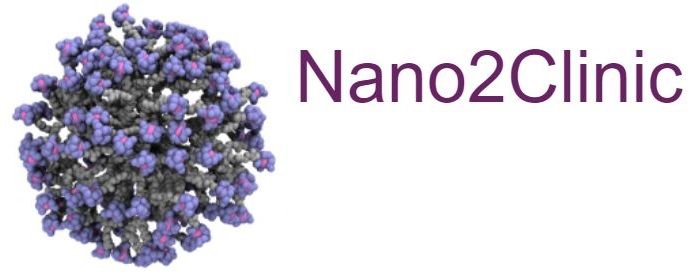 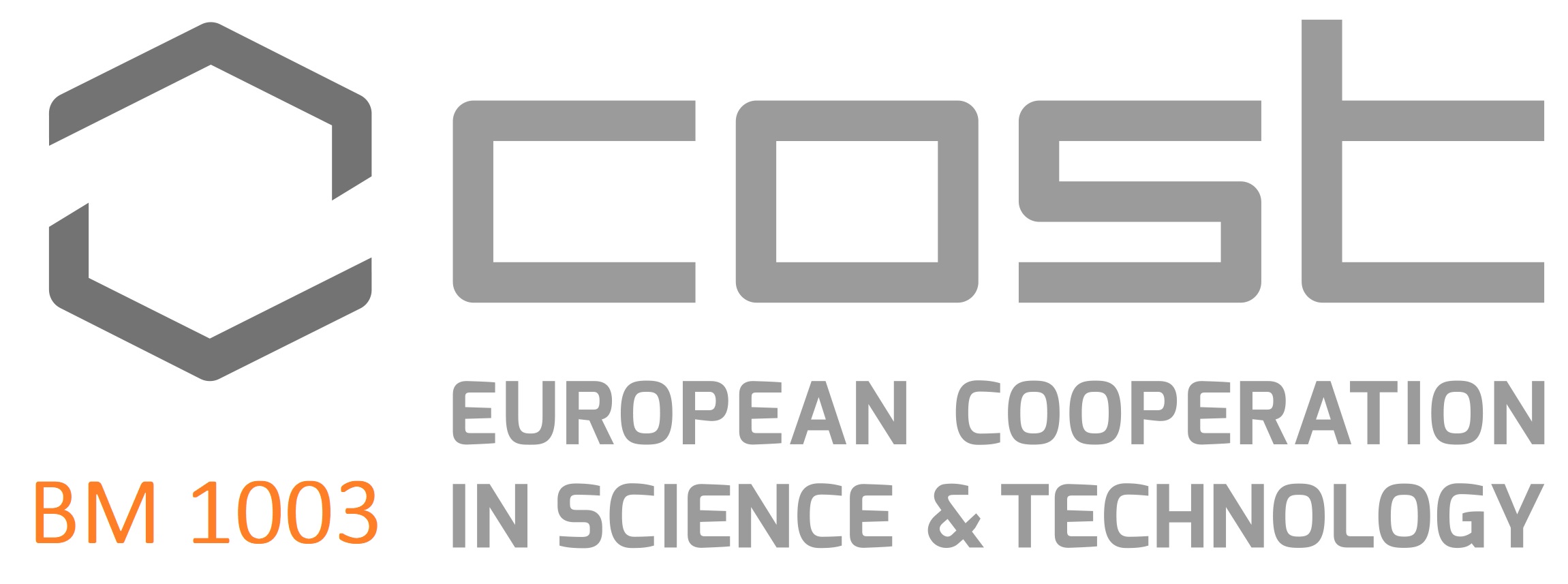 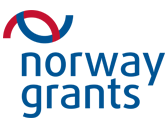 |












